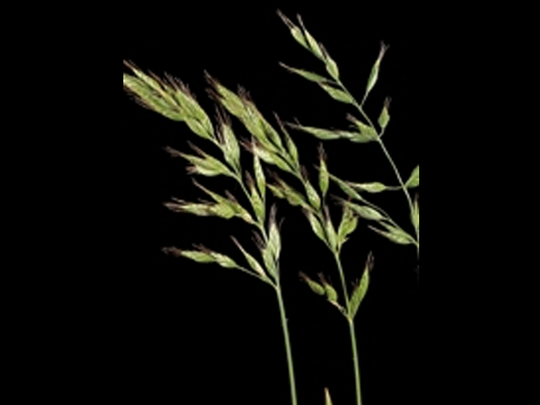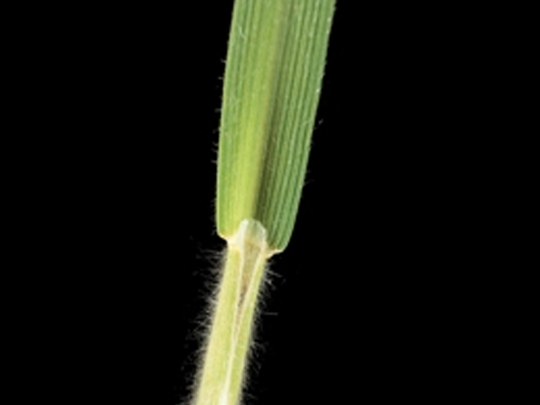Annual to biennial tussock-forming grass. Early shedding of seed and re-emergence give the appearance of persistence. The small tussocks remain green throughout the winter. Every shoot bears a culm with inflorescence which flowers in May. Widespread on not too impoverished and not too damp soils on roadsides and wasteland. Readily infests farmland and contaminates seed production of cultivated grasses. A poor quality fodder plant (feed value 3) but commonly found in many areas, particularly hay meadows. Since the leaves drop early, it tends to produce stalky hay full of ripe seeds. It used to be the main constituent of hay meadow seed. Can be controlled by grazing and intensive management.
| Leaf | Emerging leaf rolled, leaf blade open. Lower and upper side of leaves have dense covering of soft hairs. Leaf sheath tightly closed around the base of the leaf blade. Ligule medium long, slightly pointed at the back. Auricles absent. |
| Culm | Culms are produced from every shoot, geniculately ascending up to 60 cm tall. Culms and culm nodes are hairy. |
| Inflorescence | Single or double raceme (pseudo panicle) with just a few short side branches. Inflorescence erect and open only during flowering, otherwise branches and spikelets lie flat against the spindle. Several florets in the spikelets, short glumes. Awned lemma covered in short hairs. Spikelets greyish green. Flowers in May. |
| Fruit | Very early setting grain approx. 8 mm long and 3 mm wide. Central vein of lemma terminates in 7 mm long, straight awn. Both palea are bristly. Pedicel approx. 1 mm long, club-shaped end, slanted at the front. TSW 3–4 g. |

